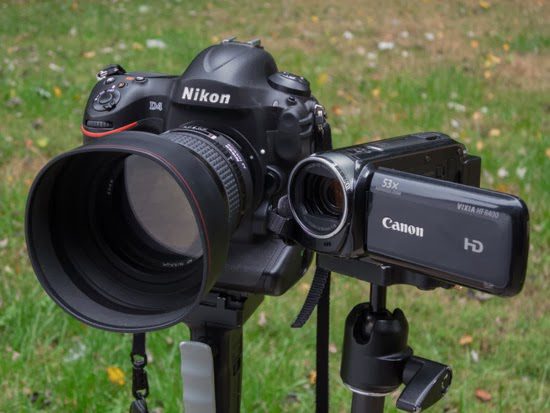Stills vs. Motion
When a photographer photographs people, they can capture decisive moments quickly. Mostly, they are reacting to what is happening in front of the camera. Those who do it the best are good at anticipating a moment, but they are still responding to how people behave in front of them. Most photographers can shoot from their hearts because when something moves them, they can capture it.
When a videographer captures something over time, they start rolling and then stop at some point. A videographer cannot just react to a moment and turn the camera on. The videographer must plan the coverage.
The primary difference between shooting stills [photographs] and motion
are shooting from their heads. They cannot shoot from their heart. Therefore, they must plan their shot more than the still photographer.
Here is an example of a storyboard from the book Using Your Camcorder by Mandy Matson.
Every book on capturing motion will address the need to plan your shots list out beforehand. Everyone recommends storyboarding your shots so you have a good idea of what you plan to get.
Regarding just capturing daily life, it is rare to get the same emotional content that a still photographer will capture because they cannot just react; they must plan their shots.
When filming, videographers not only shoot with a storyboard in mind. They must create emotion through the actors. As we know, one angle can usually improve the emotional moment more than another. The storyboard often has multiple camera angles to jump from to help make this work. They are filming Dumb and Dumber here in Atlanta. Take a look at some of the photos shot of the set by John Spink, the AJC photographer, here. You can see the same scene shot by John from two different places on the stage. He could do that because they would redo the scene over and over for different camera angles or variations from the actors themselves.
In the editing suite, they pick from multiple camera angles and different performances to craft the scene.
As you can see, to shoot a video, preplanning is required and not reacting from the heart at the moment.
The sound is the one thing that video has over stills for capturing emotion. Sound is why a good amount of the moving evening news footage is often the interview where the human voice conveys most of the feeling.
Television news knows the power of the still and uses it all the time for significant news events. For example, Eddie Adam’s photograph from the Vietnam War of the officer shooting the prisoner is always seen on the news when they talk about the war. Of course, they had a film crew who caught the entire shooting, but it is the still image that captures the emotion even more vital, or they would not be using it in the film.
I believe many of our iconic photographic images of people are where a photographer caught a microexpression. A microexpression is a brief, involuntary facial expression shown on the face of humans according to emotions experienced. They are short, lasting only 1/25 to 1/15 of a second.
Most people do not perceive microexpressions in themselves or others because they cannot freeze the moment to see it. You must slow a video down and look frame by frame to see them running at full speed; the average audience will not see them. The playback speed is why I think video has a more difficult time capturing emotions.
The Wizards Project was a research project at the University of California, San Francisco, led by Paul Ekman and Maureen O’Sullivan, that studied the ability of people to detect lies.
Truth Wizards use microexpressions, among many other cues, to determine if someone is being truthful. The Wizards Project has identified just over 50 people with this ability after testing nearly 20,000 people. So the research shows that in real time most people miss microexpressions.
For me, the photograph’s power is if they capture the “Decisive Moment,” then the truth-telling makes this a powerful storytelling medium. The picture can capture the storytelling moment that communicates emotion because the audience will have time to see and absorb the moment.
Video or Photograph?
From all my experience, I believe that the best visual storytellers use their heads and hearts.
The still photographer uses their head to plan to be in the right place at the right time. They can anticipate moments due to their knowledge of human behavior on a particular subject.
The videographer knows how to craft a sequence that will pull on your heart as a package—from a videographer’s experience, knowing what has moved their heart in the past.
My suggestion for those telling stories of life happening and not creating stories with actors is to do like so many news outlets do when it comes to communicating news events with a lot of emotion–use stills and the human voice to pull the audience in.



